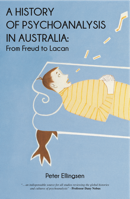What is good is nearly always confused with what succeeds, or what appears to work. But as the latest Hollywood conflation of good reveals, that is a marketing ploy. On the Road, based on Jack Kerouac’s 1957 novel, posits good as synonymous with young, but despite being a good-looking film, it is self-adoring rather than self-illuminating: You go on a road trip that is directionless with heroes who affirm their vitality rather than believe in it. It is narcissistic and at odds with Kerouac’s story, which is not about indulgence or escape but literature. The book is a self-conscious attempt to explore life before TV, ubiquitous fashion and gadgets.
The film, however, fails, and for reasons that I suspect have something in common with failed therapy. In both cases, to be effective, the exploration needs to show up the shallowness of reflective surfaces. Certainly with psychoanalysis the point is not to bolster the ego but to stare down memories full of holes and sentences seeking to sidestep infinitesimal small wounds. Psychoanalysis is not orientated to the ‘good’ as a universal standard. It aims at the desire of a singular analysand, offering that person the possibility of articulating the truth of their desire.
Like Kerouac’s book, it neither seeks nor endorses the notion of a normative ‘good’: in both cases this is the result of remaining curious rather than compliant about desire. It does not matter whether you pursue literature or psychoanalysis, the reality remains that, as beings subject to language, the central concern is always particular: ‘What do I want?’ This is a dialectic that requires a questioner — the analysand who comes along with a problem — and an interlocutor — the analyst whose job it is to listen in a very specific way. What occurs between these two is psychoanalysis.
Psychoanalysis is not just a means to be heard. It is a way to discover where one is in what one says; the place of the elusive ‘I’. This is truthful knowledge. It does not rule out therapeutic markers — such as symptoms getting better, increased autonomy and capacity for introspection — but nor does it correspond with them. Psychoanalysis and, by extension I would say good therapy, is interested in deciphering what is said so that the speaker becomes acquainted with what they want. It is the denial of this that is the source of pathology. We become ill by saying what we don’t believe. When we become aware of this largely unconscious pattern, a sense of freedom emerges. Forces are liberated within us so that it is more possible to enjoy life, not as frightened people looking for safety, or as repenting sinners, but as beings comfortable in our own skin.
I would not, however, call this state happiness because that, like the ‘good’, is an abstraction which ignores the unconscious. It is possible, for instance, to feel ‘better’ or ‘happy’ without any increase in the sort of self-awareness to which analysis orientates itself. Indeed, more self -awareness might, for a time, lead to feeling disturbed or lonely, experiences that may be part of ‘waking up’. Happiness is what some analysands expect, but it’s not something good therapy should promise. Rather, what is offered is the chance to stop devoting your life to your symptom, the troublesome behaviour that cannibalises the space where love should be.
Psychoanalysis allows a subject to close in on what makes them fall in love and desire. This is what Freud called ‘the condition of love’. In psychoanalysis, as in other forms of therapy, it is framed through the transference, or therapeutic alliance, that is, the odd way in which who and how we love derives from who and what we have loved and lost.
The transference, while it may be directed to the analyst, is in fact a love addressed to knowledge. It is a knowledge that requires speech to manifest — we say new things, more than we in fact know. This is the knowledge which appears when science gives up. It is based on language, the means we have to establish subjective truth and detect desire. Hence, analysts pay attention to what analysands say, not what they ‘meant’ to say. Strange as it may seem, we don’t really know what we say most of the time. To be human is to be spoken by signifiers, or what you might call the values that inhabit us via what we have seen and heard.
One way of thinking about what happens in an analysis is to imagine these inherited values, or identifications, being unpicked, so that something like real autonomy and choice emerges. With the advent of true speech comes a position where analysands can speak to the analyst about themselves, rather than confusing the analyst with someone else. This is a process which does not, however, arise through persuasion or even by thinking which, in itself, solves none of the riddles of mental distress. It appears when the analysand speaks freely, and the analyst proceeds without any purpose in view, allowing him or herself to be taken by surprise. Kerouac’s book gives the feeling of a writer surprised at what he finds. The film, however, strives for ‘good’ answers to questions no one is asking. There is no curiousity, so no desire. It reminded me of graffiti which said: ‘Computers fail: they only deliver answers’.

